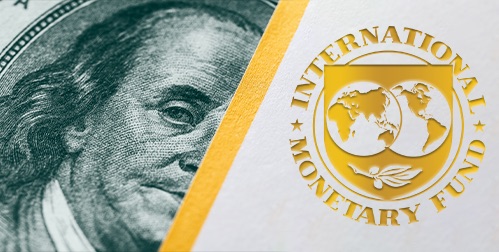Global Sentiment Turning Against the Dollar
The International Monetary Fund (IMF) is the latest organization to join the global shift away from the US Dollar. The IMF unveiled its own digital dollar to conduct international trade. Their central bank digital currency is called the Universal Monetary Unit. Known as Unicoin for short. The IMF sees it as a complement to existing money commodities and as a store of value. Economists are seeing it as part of a growing movement to end dollar dominance.
Former President Donald Trump said the US dollar “is crashing and will no longer be the world standard, which will be our greatest defeat, frankly, in 200 years.”1
China and Russia are leading the assault on US dollar dominance. Russia converted its market operations to the Chinese yuan. In February, the yuan replaced the dollar as the most traded currency in Russia. They are switching the Russian national wealth fund to hold 60% of its assets in yuan. The adoption of the yuan took less than a year after the US sanctioned Russia over the Ukraine invasion.
Russia is trying to lead the BRICS alliance to form its own trade currency. The BRICS nations include Brazil, Russia, India, China, and South Africa.
“Our goal should be focused on writing new rules in the financial sphere in order to enable the use of an already common currency,” said a Russian representative. “It doesn’t matter whether it’s a digital ruble, a digital rupee, a digital yuan, or some other currency. But this currency must follow the laws of our respective nations.”2
Russia pointed out that the US dollar does not benefit the shared objectives of the countries. Their reliance on the dollar gives the US an unfair advantage in the grand scheme of things. Russian officials added that the proposed currency will be backed by gold or other rare-earth elements.
In another anti-dollar development, China and Brazil agreed to trade in their own currencies. Before, they had to convert their currencies to dollars, trade, and then convert them back. The agreement cuts into the US hegemony in Latin America.
US monetary policy has a history of damaging South American economies. Rising interest rates sparked the Latin American debt crisis in the 1980s. Jim O’Neill was a chief economist at Goldman Sachs. He said, “Whenever the Federal Reserve Board has embarked on periods of monetary tightening, or the opposite, loosening, the consequence on the value of the dollar and the knock-on effects have been dramatic.”3
US monetary influence over the energy sector is declining. Energy was once only traded in dollars. China just completed its first natural gas deal with France using yuan. Saudi Arabia is open to trading oil in yuan as well. They also agreed to join a China-led Shanghai Cooperation Organization (SCO). The SCO is a political, security and trade alliance created to counter Western influence. Its members include China, Russia, India, Pakistan, and four central Asian countries.
China and Malaysia are looking into an Asian Monetary Fund to reduce reliance on the dollar. Malaysia also agreed with India to trade in Indian Rupees instead of dollars.
Gold Reacts to Anti-Dollar Sentiment
Gold is reacting quickly to the dollar developments. Investors and central banks are seeking safe haven alternatives to the dollar. Gold prices are surging to new all-time highs. The gold market traded solidly above $2,000 an ounce.
After buying a record amount of gold in 2022, central banks are not letting up. 2023 is seeing the strongest start to the year in more than a decade.4 The continuing international push against the dollar may have a long-term negative impact. The value of dollar-denominated assets like stocks and bonds could plummet. A Gold IRA can preserve the value of your portfolio from a declining dollar. Contact us today at 800-462-0071 to learn more.







